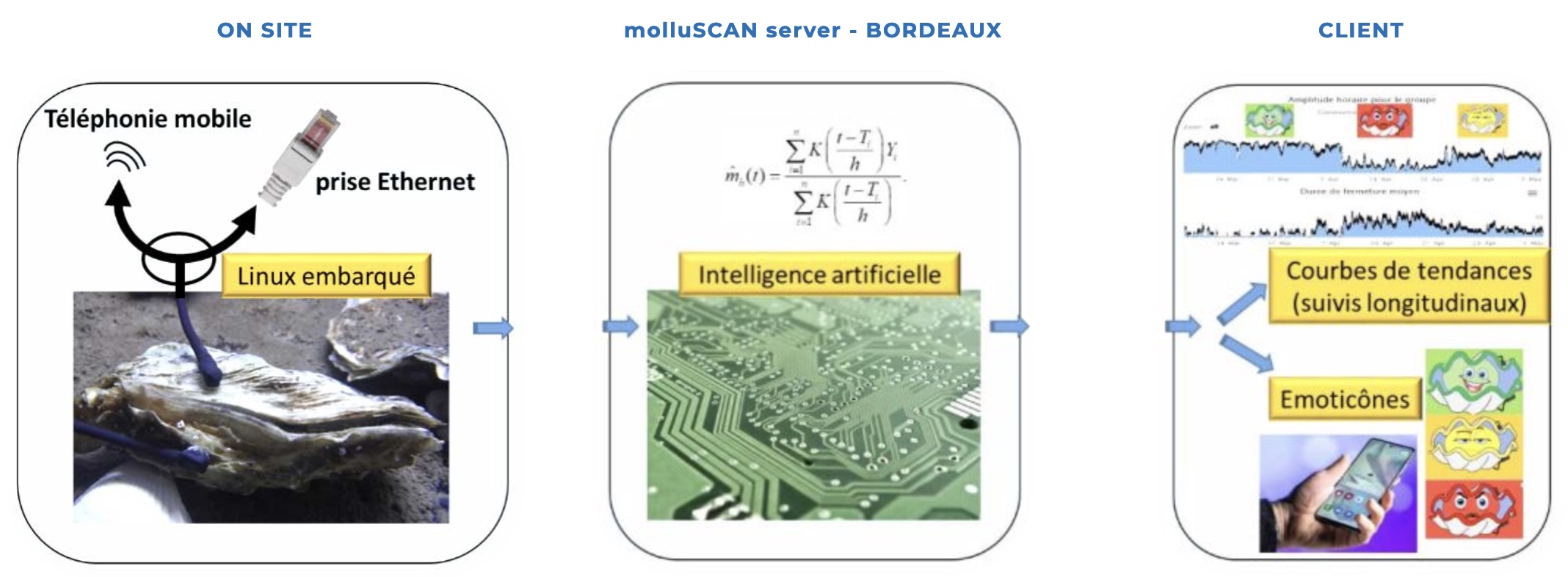
If the clams could speak, what would they say? Surely we all ask ourselves this question every day. But a French startup is going further, allowing bivalves like clams, mussels, and oysters to act as all-natural water quality inspectors. MolluSCAN was showing off its tech this year at CES 2024 in Las Vegas.
The company began as a research project some 15 years ago at the University of Bordeaux. CEO and co-founder Ludovic Quinault and his team were looking into monitoring the health of bivalves, a category of marine animals found all over the world in both fresh and salt water. As largely stationary filter feeders, they are quite in tune with their surroundings, and their habits are affected by things like temperature, pollution, and so on.
Quinault found that a simple, non-invasive sensor attached to the clam or oyster’s shell can monitor everything from feeding to reproduction and stress responses like suddenly shutting or failing to open at the normal time. These in turn are excellent predictors of various qualities in the water, and can act as an early warning system for problems like toxic substances. The mollusc doesn’t know whether it’s closing because of crude oil residue or an algae bloom, but it intuits that the water is unsafe for life and shuts up. In fact Ludovic has found that they are extremely sensitive to small changes that chemical analysis may not even pick up reliably.
That’s one signal among many that can be told by monitoring bivalves, and after more than a decade of research, Quinault and his team are aiming to commercialize the technology, forming molluSCAN in March of 2023.
Water quality is of course very important to governments, park rangers, and many industries, but the process of sampling and testing it is rarely convenient. It’s usually impractical to put testing apparatus at multiple places in a body of water, so usually people have to go out and collect samples, then bring them to a central location to be analyzed.

The molluSCAN-eye system won’t replace traditional water monitoring, but as a living part of the water ecosystem, its health and the health of its surroundings are closely linked. So oysters doing well in one branch of a river but not another, or mussels suddenly snapping shut in some places after a spill — both these are complementary signals to ordinary testing and could also help direct resources to places where they are particularly needed. The system that monitors clusters of animals is totally self-contained and can operate without any maintenance for more than three years, he said.
Since their debut last spring, molluSCAN has landed two regular customers and has three more in talks, though they also have over a dozen science-focused installations around Europe. Quinault is hoping that municipalities and natural resource authorities will shell out for the tech as a totally natural, harmless, and low-touch way to watch their waterways.
